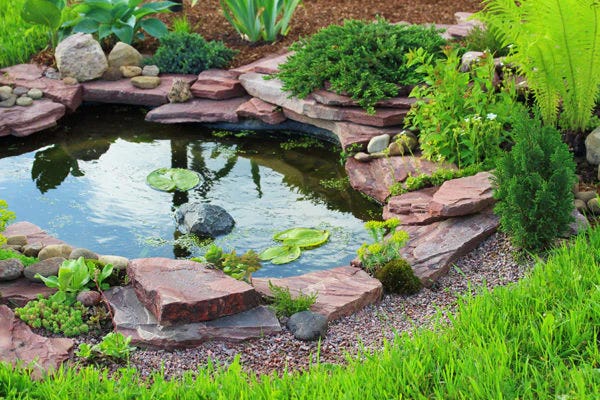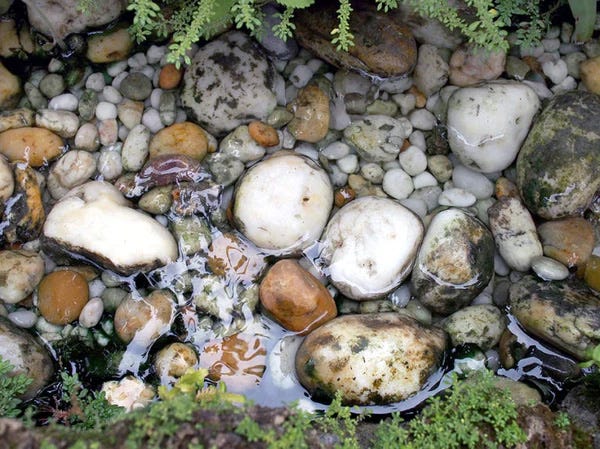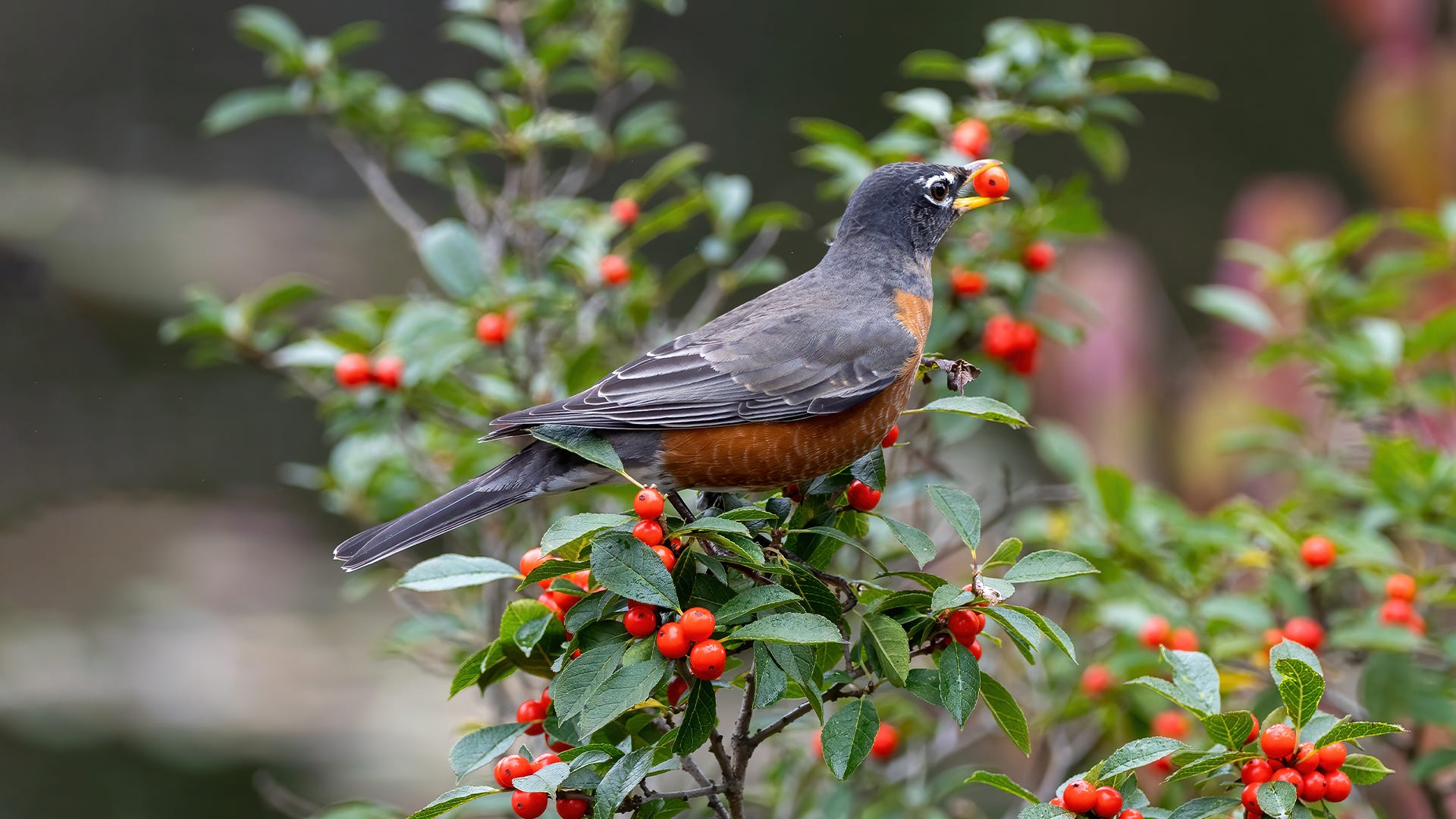
Backyard birdwatchers share several things in common, one of them being their intense love of birds. The other is the work they invest in attracting birds to their backyards. Most birdwatchers know that having the right foods in their feeders is key to attracting birds to their backyards. However, after the right foods, a bird bath and water feature is the best way to keep birds coming to your backyard.
Narrowing Down Your Choices
Whether you are shopping online or walking around garden centers and home improvement stores, choosing a bird bath and water feature can be overwhelming. Choices in bird baths vary from their style to the material they are made of.
Water features range from simple sprays to a backyard pond complete with landscaping geared to both attract and feed visiting birds. It’s important to know the pros and cons of both in order to save time and money. Doing research ahead of time is a helpful way to narrow down your choices so you end up with a water feature that works for your yard.

Bird Baths
There are several things to keep in mind when picking out a bird bath. First and foremost is size.
Size
Small bird baths are easier to set up and maintain, but a large bath brings more birds to your backyard. A large bird bath can be used by many birds without territorial issues. Small bird baths may run out of water more quickly. On a hot summer day, you might find yourself refilling it more frequently.
Height
Taller bird baths give small bird species some security as they keep an eye out for predators. This is important if your feeders tend to attract smaller birds. Larger birds tend to be ground feeders, so a taller bath might be detrimental if you are trying to attract doves, blue jays, robins, and woodpeckers. Ground level water basins are more likely to attract these species and other large birds.
Design
Hanging, mounting, and pedestal bird baths are some of the choices when it comes to design. When choosing the design, it is helpful to keep safety in mind. A hanging bird bath isn’t a good choice if there is no safe place to hang it from. A mounted bird bath—often a basin that attaches to a porch railing, decorative yard piece, or wall that encloses a patio—is accessible but may make birds vulnerable to predators. A pedestal bird bath will include access for more birds, but it requires level ground for stability and safety.
Climate
When choosing a bird bath, it’s important to take your region’s climate into consideration. While a resin bird bath might be more affordable, it is more prone to cracking in cold weather, a con for backyard birders in Northern climates. Also, resin bird baths do not hold up to additional weight as well as bird baths made of other materials. If you live in a warmer climate, consider a bird bath made of concrete. They do not break as easily, remain cool in the heat, and handle additional weight.
See also: 8 Things Your Should Know Before Installing a Bird Bath
Water Features
There are birds that may never visit feeders but might be attracted to your water feature. Offering birds a water source in your yard is a great way to attract more birds to your yard.
Getting them to notice your water feature requires more than just turning on the hose and filling its basin.
Adding a moving water feature to your bird bath is the best way to attract those hard to get birds. Birds have
acute hearing and will pick up the trickling or running sounds of water from a distance. As they fly overhead,
they will notice moving water from above. This is one of the benefits of adding a water feature to your backyard.
Bird Bath Fountains
While the words ‘bird bath’ are part of the bird bath fountain, they are more than just a bowl of water mounted on a pedestal. Most fountains include a pump to circulate water. There may be several ‘tiers’ involved in a strategy of water circulating in a spray, flow, or gentle falling motion. A reservoir to catch the water flow usually includes an arrangement of rocks, pots, or jars. It may be freestanding or mounted to a wall. One benefit of a bird bath fountain is the constant regulated flow of water and its aesthetic pleasure. A bird bath fountain also stays cleaner because the water is never stagnant. However, the a bird bath fountain’s water will evaporate quickly, requiring regular checks on water levels. The water in the basin should never be let to get too low as the pump will be damaged. Bird bath fountains are best suited for warmer climates, as pumps are delicate and tend to freeze in cold weather.
See also: Tips for Choosing the Perfect Hummingbird Feeder
Ponds
One benefit of a backyard pond is its ability to attract a diverse group of species. Ponds allow you to add features for moving water that will attract even more birds. You can also add water plants, offering birds a food source in addition to a water source. There are, however, some cons to installing a pond as a water source for birds. Ponds require more maintenance than a simple bird bath with a water feature. The area you intend to install a pond in needs to be level ground. Pumps, filters, and liners can break and may need to be replaced. If there is run-off near the pond, there is the chance that chemicals such as fertilizers or pesticides from neighboring yards can harm birds. Another downside is excessive algae buildup common to ponds. Before choosing a pond, it’s important to spend enough time planning and deciding if you have the time required for its upkeep.
Misters and Drippers
A simpler choice in water features for your backyard are the mister and dripper. Misters, also referred to as leaf misters, offer a gentle water source for birds. Placed over a bird bath, the mister gently mists foliage, allowing birds to brush against the leaves for a cool gentle bath. Misters are low cost, easy to set up, and appeal to just about every species of birds. The only downside to a mister might be the fact that the garden hose you attached to it will be out of commission for other yard duties unless you disconnect the mister.
A dripper offers the same constant water source in a steady drip, drip rhythm. Though easy to set up, dripper are sometimes more expensive. However, drippers boast a big benefit: most come with filter washers to keep debris out and a Y valve connector that will allow you to use your garden hose at the same time as it’s running in the bird bath.
See also: Lawn Care With Birds in Mind
Streams
A stream is a natural flowing water source that is especially attractive to birds. Not only does a stream offer water, but also an added benefit of a food source in insects. You do not need to have a natural stream already; you can build an artificial stream just for birds. One of the pros of adding a stream to your backyard is that you can tailor it specifically to birds’ needs and safety. However, you should know that it can be time-consuming to monitor water levels, especially after rainy periods. Regular maintenance to remove debris each day could also be a chore. Lastly, another downside to consider is that the sound of water accessible at ground level may entice predators such as cats to your stream.
Weighing the Pros and Cons
While it seems like there are endless choices in bird baths and water features, knowing the pros and cons helps cut your options down. Whether you opt for a simple bird bath with a mister or decide to roll up your sleeves and build a pond, you can feel confident that you have chosen the perfect water source for your backyard.
See also: What Keeps Birds Out of Your Yard






